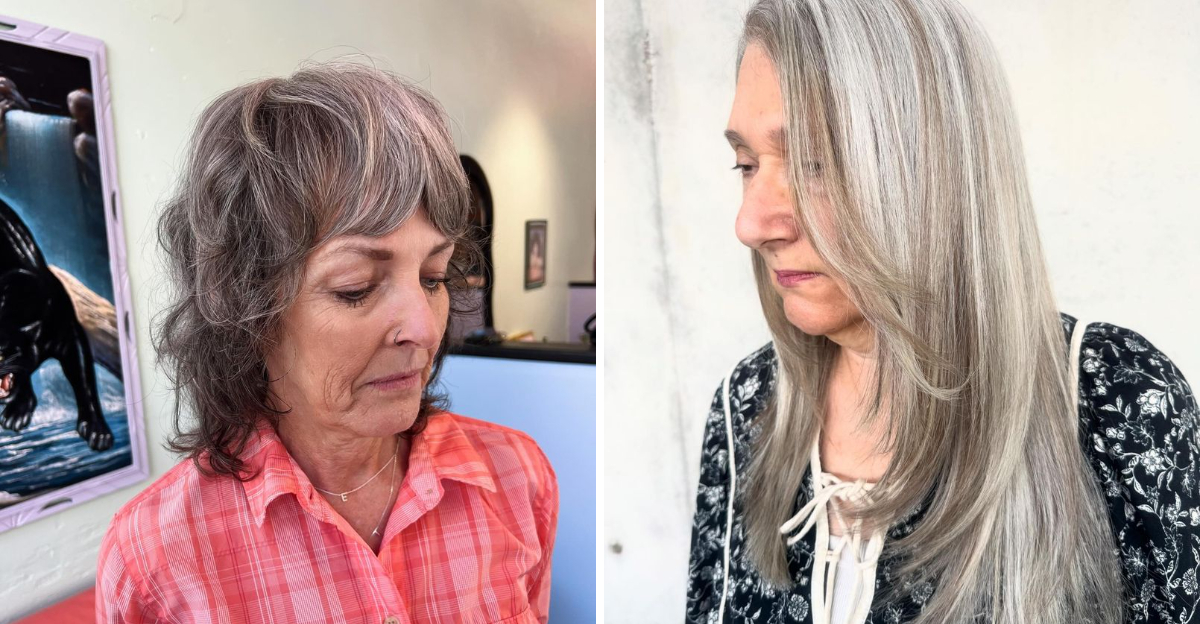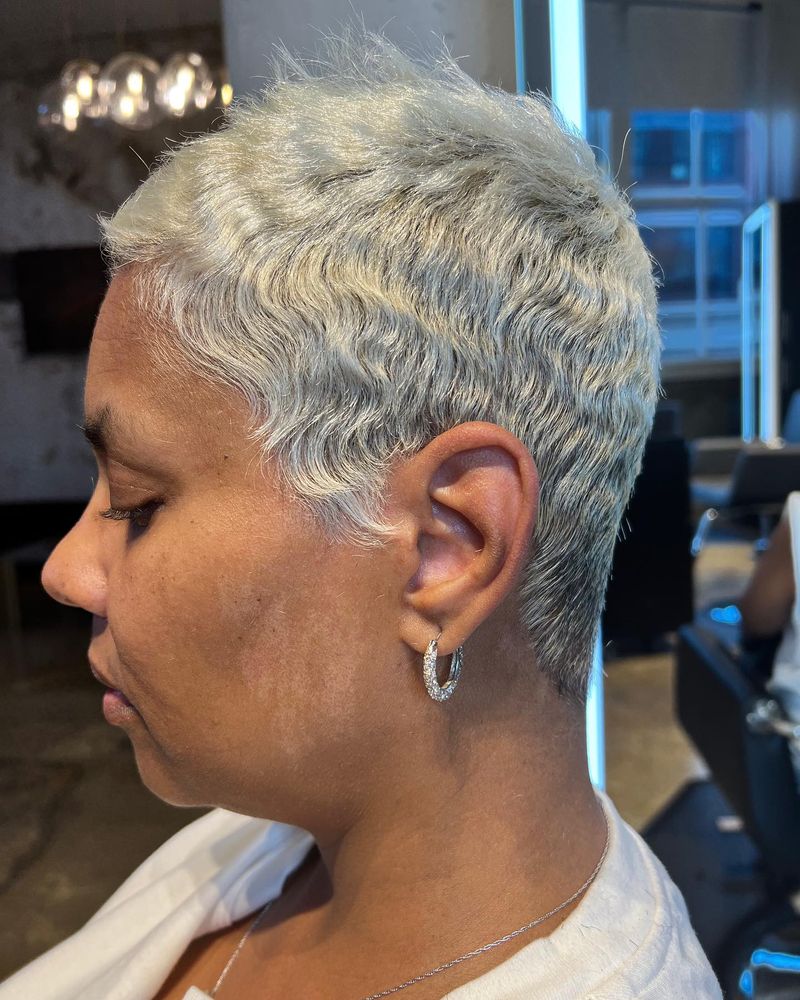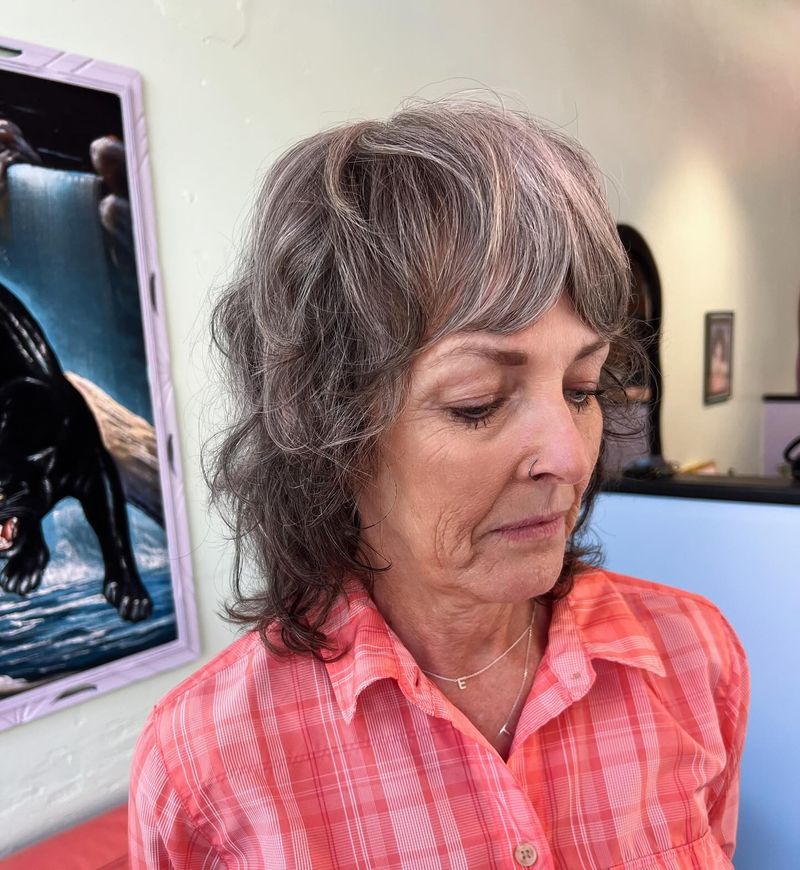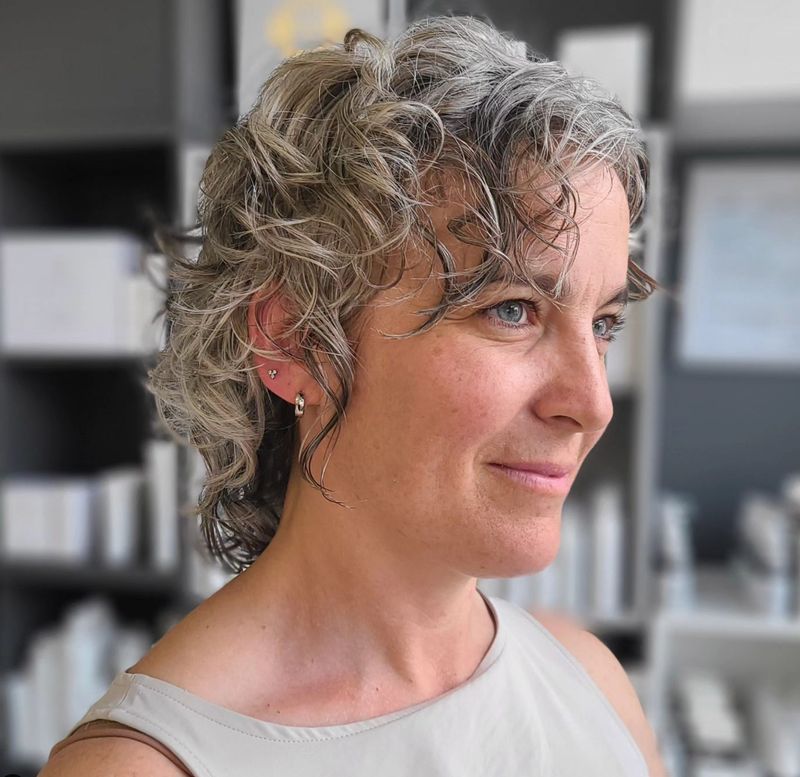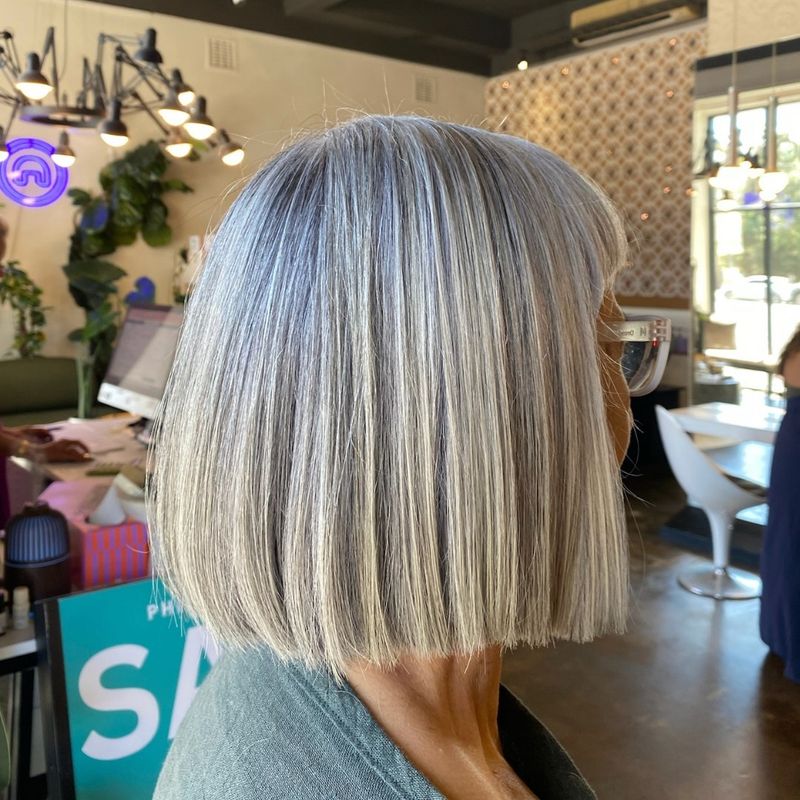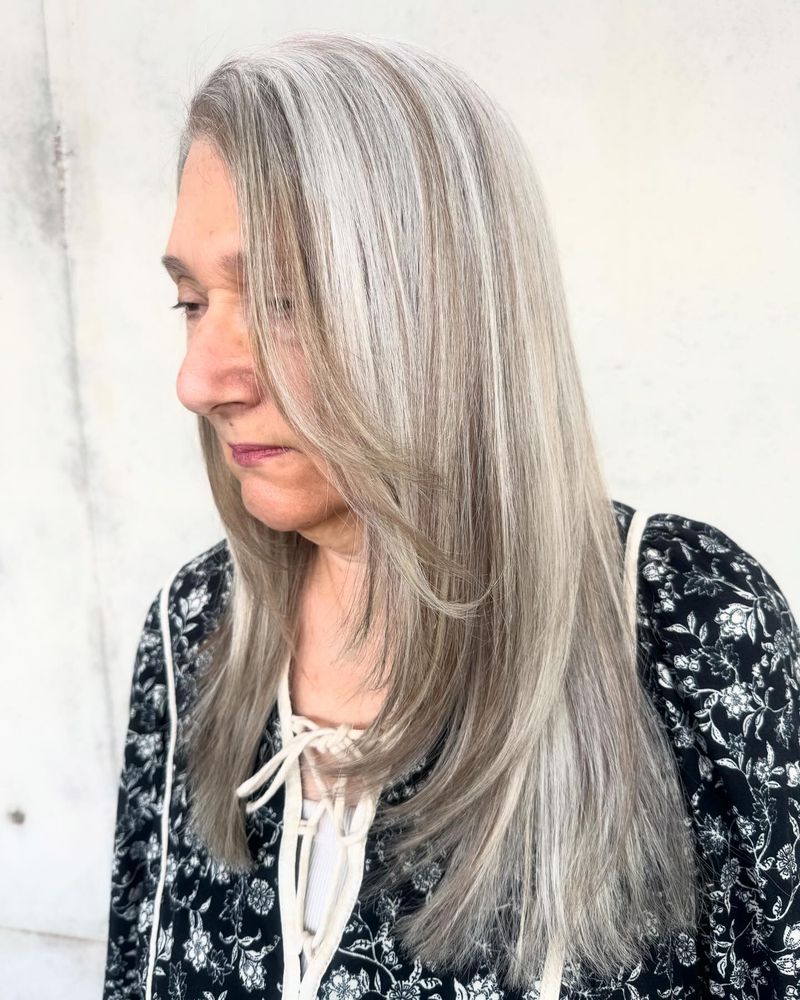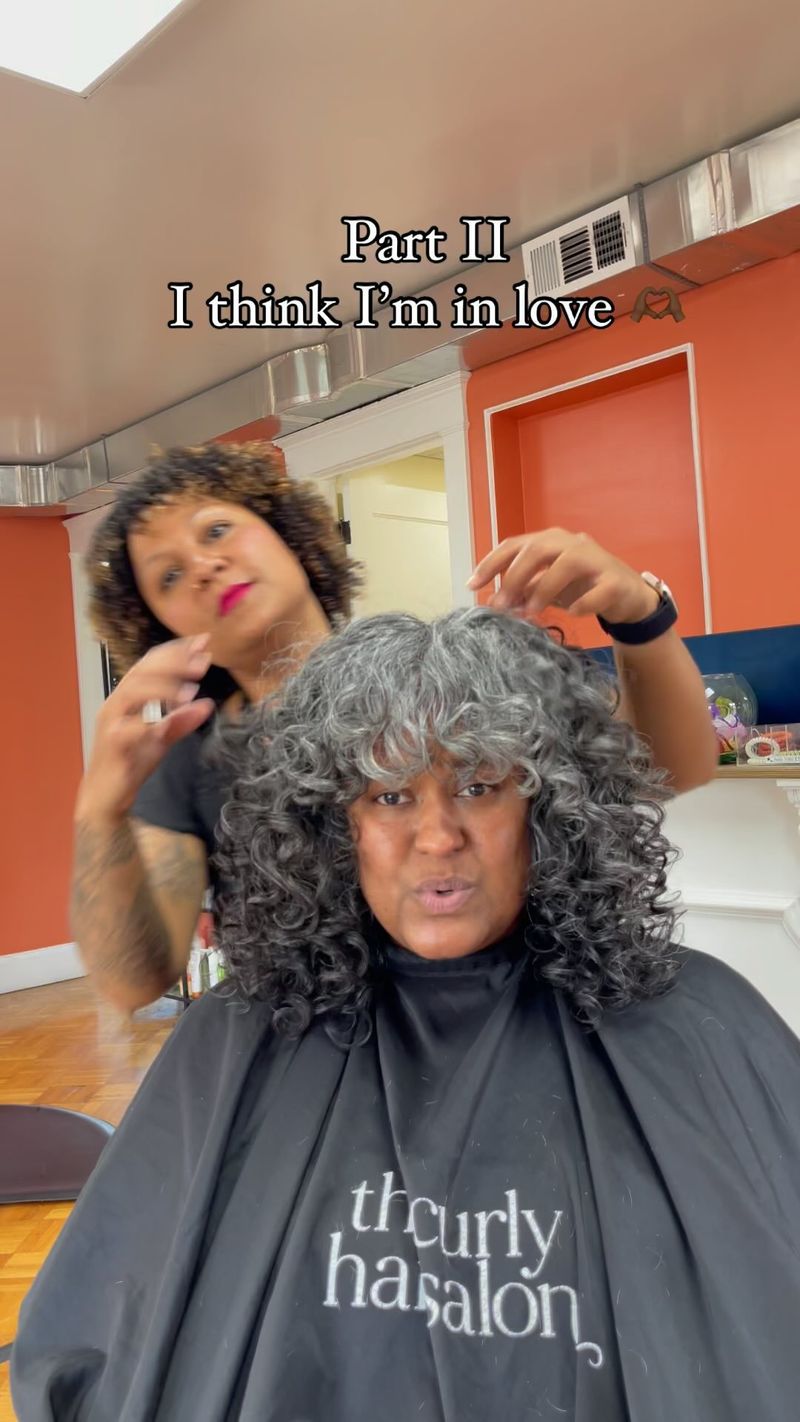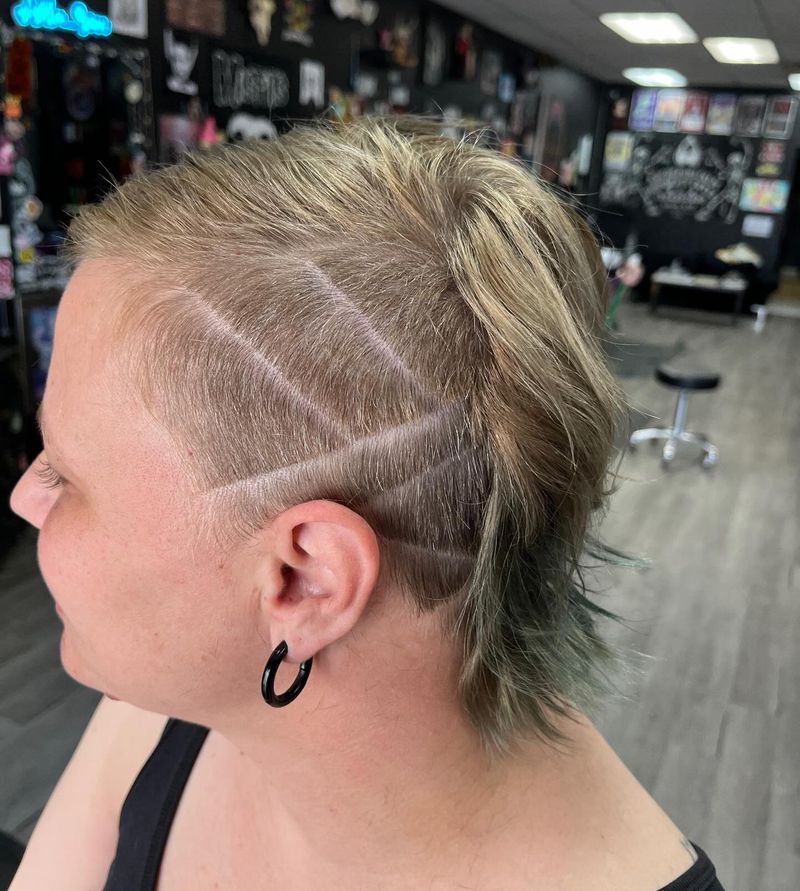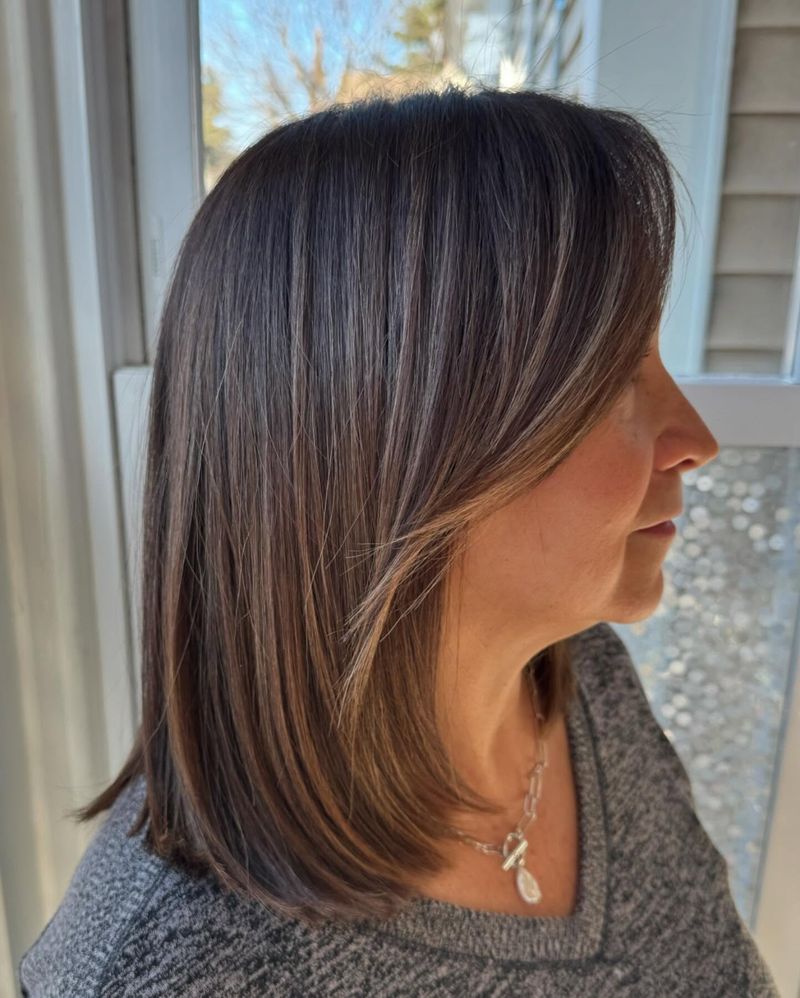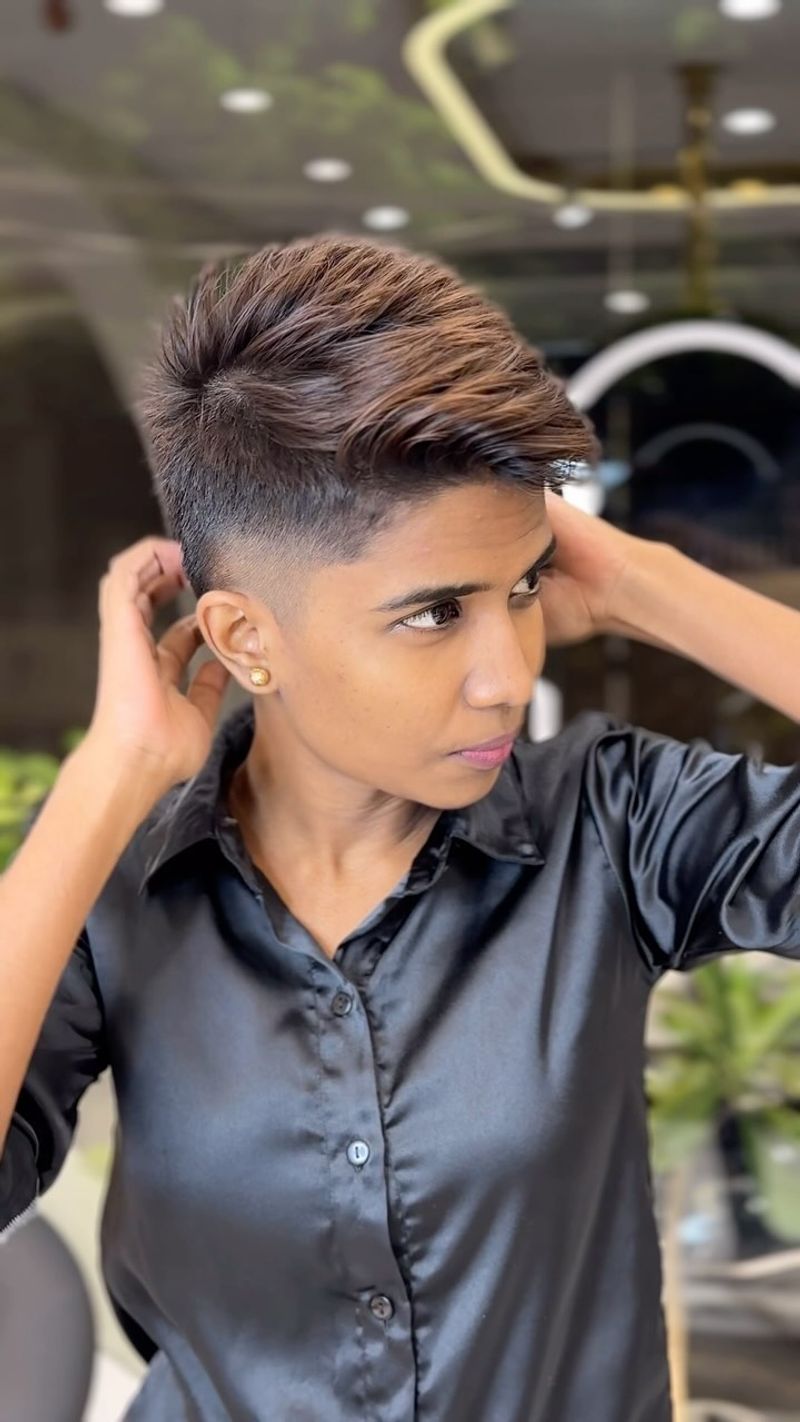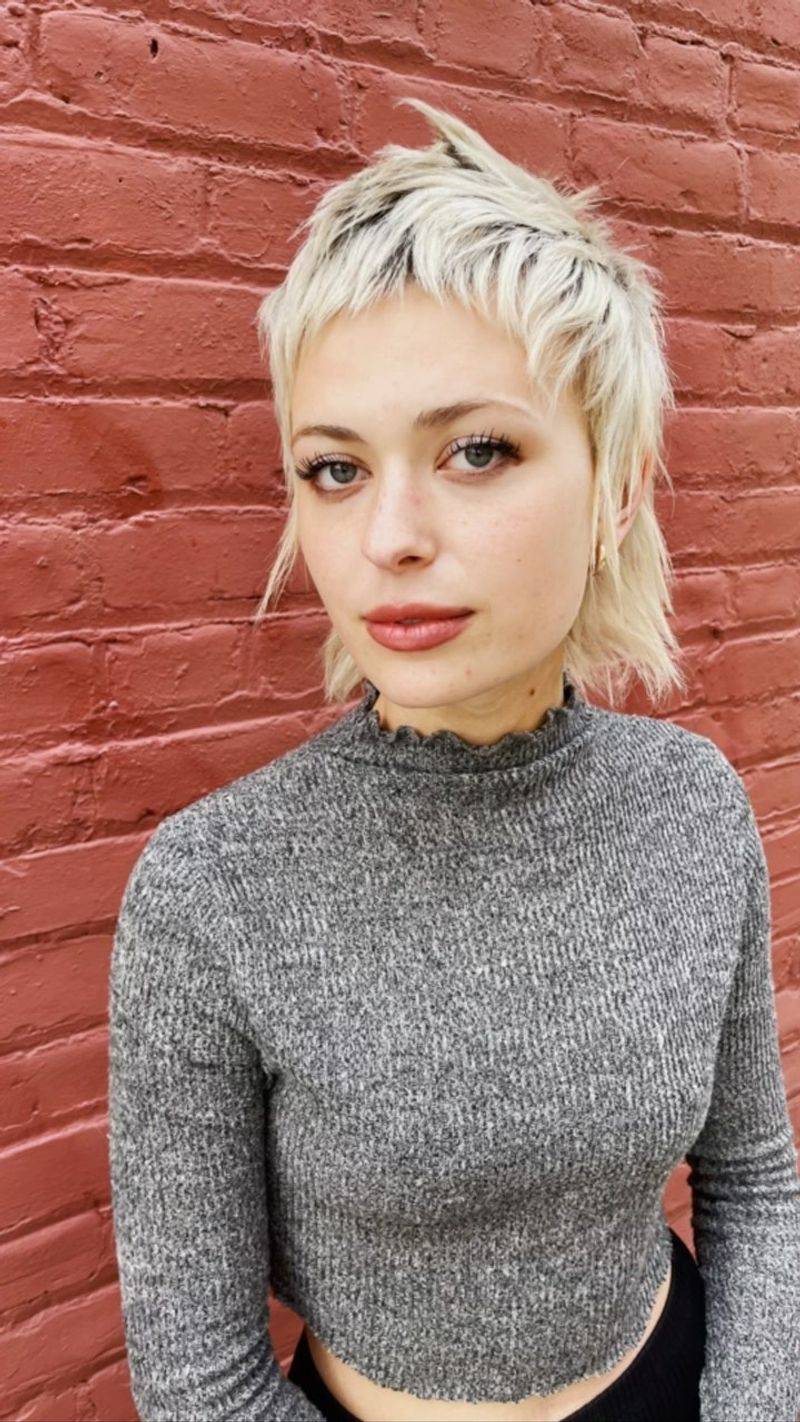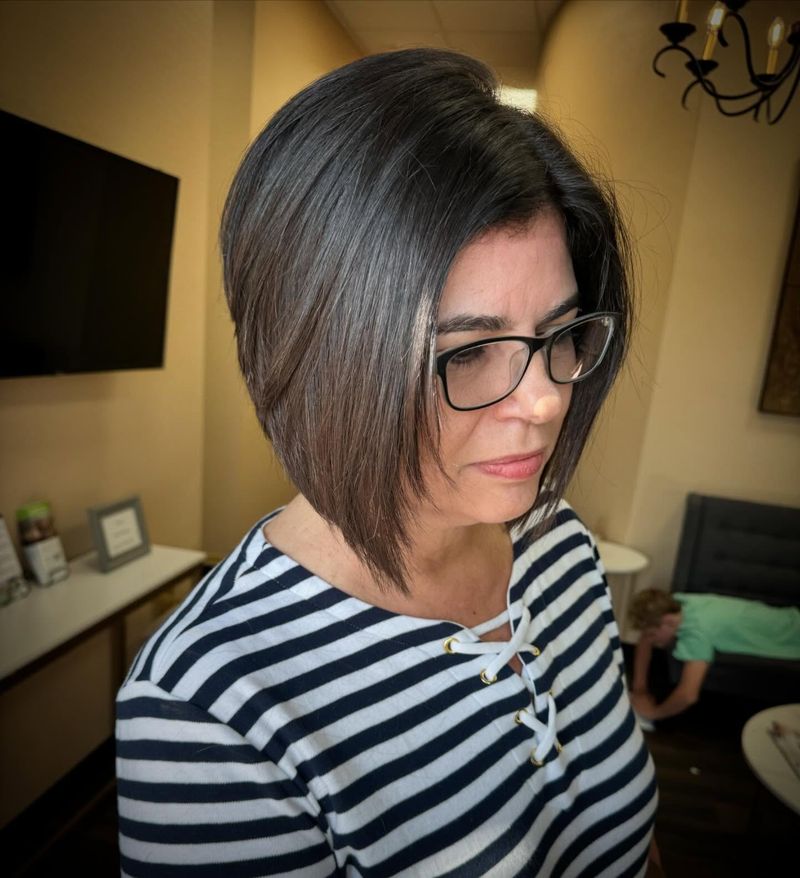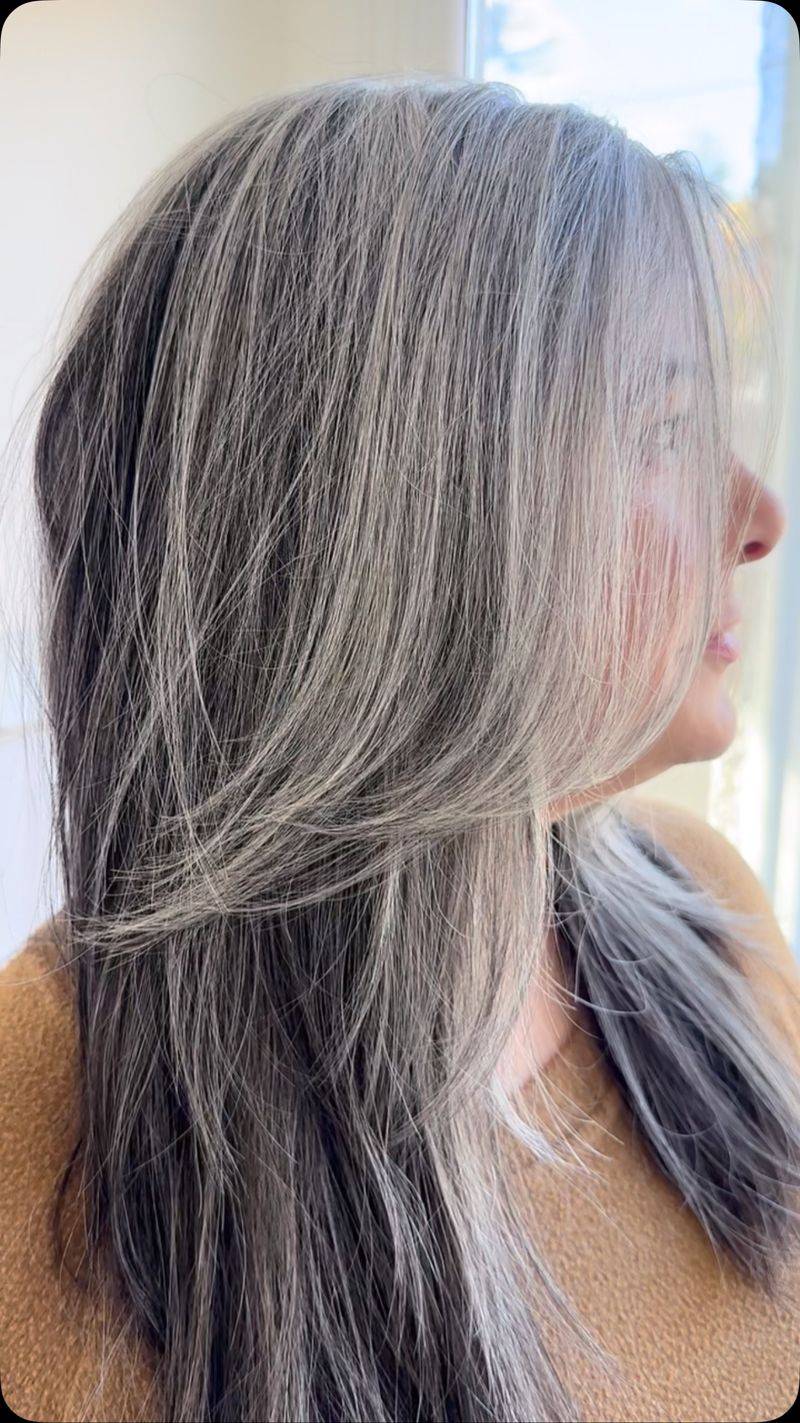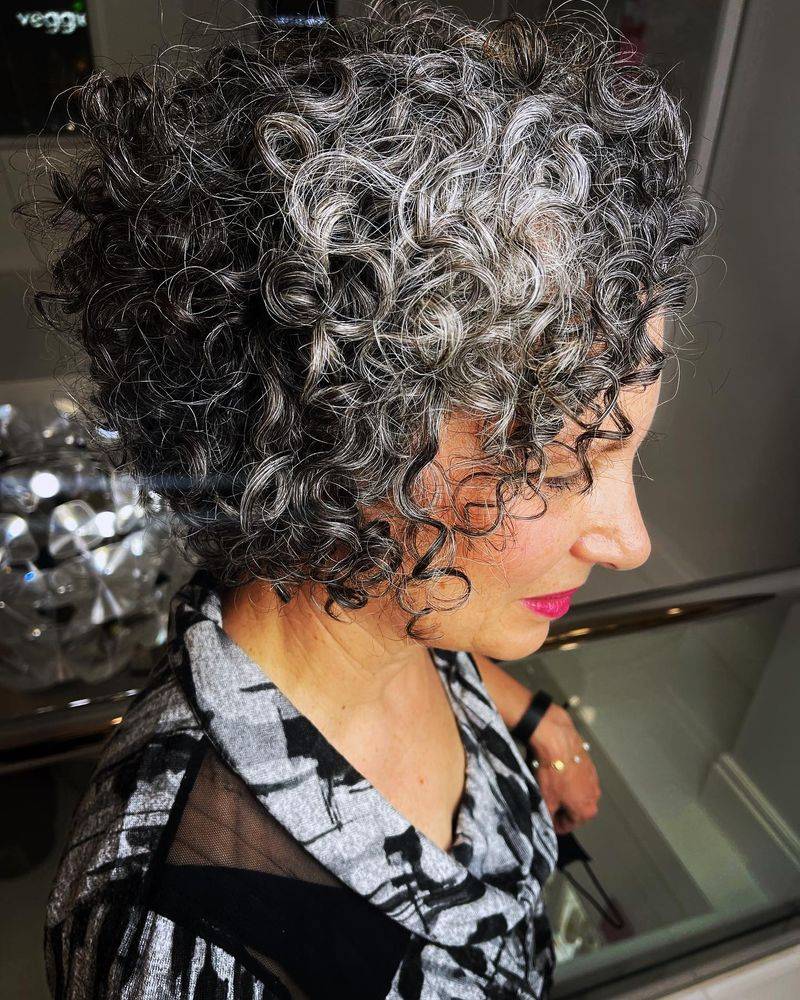Finding the perfect haircut after 60 can feel like navigating a maze with hidden pitfalls. While layered cuts often add volume and movement, not all variations complement mature faces, hair textures, or lifestyles. Before your next salon visit, consider these potentially problematic layered styles that might age rather than flatter your beautiful features.
1. Super Short Pixie With Choppy Layers
Extremely short pixies with random, couches hachées can emphasize fine lines and create a harsh appearance. The severe cut often highlights facial asymmetries that naturally develop with age. Instead, opt for a softer pixie with gentler layers that frame your face gracefully.
2. Razor-Cut Shag With Thin Ends
Razor-cutting creates wispy, thin ends that accentuate already thinning hair. Many women experience natural hair thinning after 60, and this technique magnifies the problem. Fuller ends with blunt cutting techniques provide the illusion of thickness aging hair desperately needs.
Related: -22 Low-Maintenance Layered Haircuts That Keep Older Women Looking Fabulous
3. Overly Feathered Face-Framing Layers
Remember Farrah Fawcett’s iconic 70s feathered look? That extreme feathering around the face creates dated, aging results on mature women. Excessive face-framing can draw unwanted attention to neck laxity and jowls, areas many women prefer to downplay after 60.
4. Mullet-Inspired Layered Cut
Moderne mullet revivals with dramatic length differences appear harsh on mature women. The severe contrast between short top layers and longer back sections creates an unflattering, disconnected appearance. Balance in layer lengths creates more harmony with mature features and elegant style.
5. Blunt Bob With Disconnected Interior Layers
Bobs with hidden, disconnected interior layers often fall flat on mature hair. The stark contrast between the blunt perimeter and choppy internal layers creates awkward growth patterns. Gray or white hair especially shows these disconnections more prominently, appearing unkempt rather than stylish.
6. Extremely Long Layers With Thin Ends
Ultra-long hair with extensive layering often appears stringy and lifeless after 60. Hair density naturally decreases with age, making very long layers appear thin and flat against mature faces.
Shoulder-length or shorter styles typically provide more lift and vitality for aging hair textures.
7. Heavy, Blunt-Cut Bangs With Layers
Thick, straight-across bangs paired with layers create a harsh frame for mature faces. The severe horizontal line across the forehead often emphasizes fine lines rather than softening them. Heavy bangs can also highlight thinning hair by concentrating density in one area while leaving other sections looking sparse.
8. Pyramid-Shaped Layers
Triangle or pyramid-shaped layering creates an outdated silhouette that widens at the bottom. This shape often results from poor layer distribution, with too much weight remaining in the lower sections. The widening effect at the bottom can make the face appear heavier and drag features downward.
9. Spiky, Gel-Heavy Crown Layers
Short, spiky layers styled with heavy gel create an outdated, harsh appearance. This styling approach looks particularly artificial against softening facial features and silver hair.
Natural movement in layers complements mature beauty better than stiff, product-laden spikes pointing in all directions.
10. Straight-Edge Layered Lob With No Movement
Long bobs with uniform, straight-edge layers often appear rigid and severe on women over 60. The lack of softness in the lines contrasts unfavorably with softening facial contours. This one-length approach to layering can highlight rather than disguise neck laxity, creating an aging effect.
11. Dramatic Undercut With Long Top Layers
Extreme undercuts paired with long top layers create a disconnected, harsh contrast on mature women. While fashionable on younger faces, this dramatic style often appears trying-too-hard on women over 60. The maintenance required to keep this look polished becomes increasingly challenging with graying or thinning hair.
12. Overly Thinned-Out Crown Layers
Excessive thinning at the crown creates flat spots that expose the scalp. After 60, natural hair thinning already occurs, making additional thinning from poor layering techniques particularly problematic.
Crown fullness provides youthful height and balance, which overly thinned layers undermine rather than enhance.
13. Severe A-Line Bob With Heavy Interior Layers
Dramatic Les bobs en ligne with substantial interior layering often create a disjointed appearance on mature women. The stark angle emphasizes neck issues while the heavy internal layers can appear choppy rather than sleek. More moderate angles provide the same elongating effect without the severity.
14. Long Layers with Minimal Volume
Long layers can sometimes lack the volume needed to frame the face beautifully, especially as hair loses its natural fullness. This might lead to a limp appearance that does not do justice to your vibrant self. With minimal volume, long layers might not provide the lift and bounce that flatter your features. Opting for added volume can create a youthful silhouette. By embracing layers that incorporate more body, you can transform your hairstyle into one that complements and enhances your mature charm.
15. Over-Textured Curly Layers
Excessive texturizing on naturally curly hair creates frizz and undefined layers. After 60, curly hair often becomes drier, making over-texturized layers appear even more frizzy and unmanageable. Strategic layering that works with natural curl patterns creates definition without the frazzled effect.

